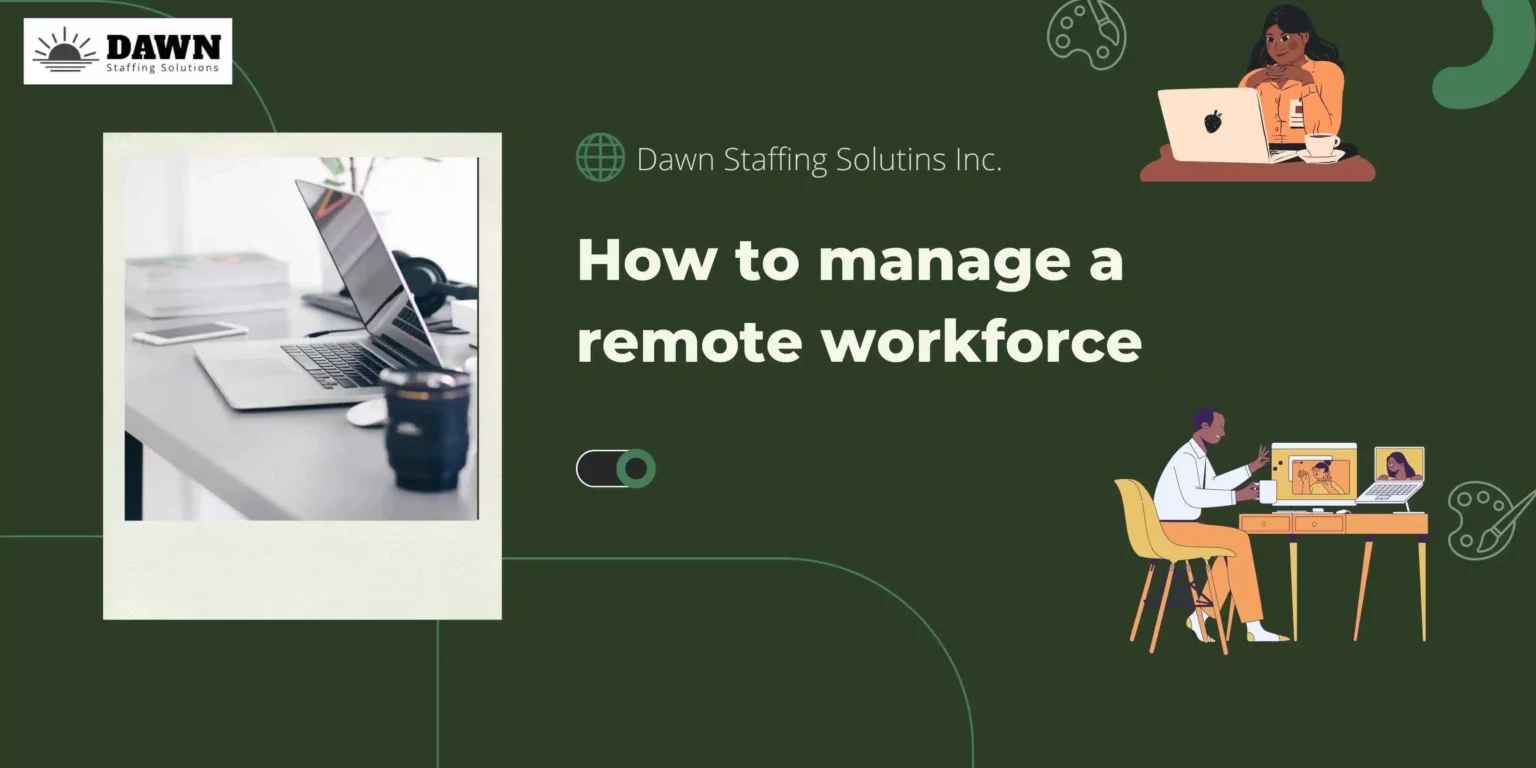How to manage a remote workforce

Common Challenges of Remote Working:
In the beginning, managers must know what factors make remote work particularly demanding. Other employees with high performance could see a decrease in their engagement and performance as they begin working remotely, particularly without preparation and proper training. Some of the challenges that remote work poses are:
The absence of face-to-face supervision:
Managers and employees frequently voice concerns over the lack of face-to-face interactions. They worry that their employees might not be as productive or at the same rate (though research suggests otherwise, at least in certain types of job descriptions). Many employees, however, have difficulty accessing management support and communications. In certain instances employees believe that remote managers aren’t in contact with their needs and thus aren’t helping nor supportive to accomplish their goals.
Inaccessibility to information:
The new remote workers are often shocked by the extra time and effort required to find information from colleagues. Finding answers to seemingly basic questions can be an enormous obstacle for workers who work from home.
This issue extends beyond the scope of work and can lead to interpersonal issues that may arise among remote coworkers. Studies have found that the absence of “mutual knowledge” between remote workers can lead to a decreased willingness to give colleagues the benefit of doubt in stressful situations. If, for instance, you are aware that your coworker is suffering from a difficult day, you might consider a rude email from them as a result of their anxiety. If, however, you get an email from a distant coworker who has no knowledge of their present circumstances it is more likely to feel offended or, at the very least, to judge the professionalism of your colleague.
Social isolation:
It is one of the most frequent complaints regarding remote work, as employees lacking the social interactions in a workplace environment. It is believed that people who are extraverts might be more susceptible to feeling isolated in the short term especially when they don’t have the opportunity to interact with other employees in their workplaces that are remote. However, over a long amount of time being isolated could cause employees to be less “belonging” in their company and could lead to a greater desire to quit the organization.
At-home distractions:
We frequently see images of remote work, which show parents holding their children working on a laptop, usually on a sofa or on the floor of the living room. Actually, this is a poor image of the effectiveness of virtual work. We typically advise employers to ensure that remote employees have proper childcare and a dedicated workspace prior to allowing them work remotely. However, in the event of a sudden shift to working remotely it is likely that there will be a higher chance that employees will struggle with a lack of workspace and (in the case of school closings and daycare closings) unpredictable parenting responsibilities. In normal circumstances, the demands of family and work could interfere with remote work. Managers must anticipate these interruptions to be more prevalent during this sudden work-from-home shift.
How can managers support remote employees?
Although remote work is fraught with difficulties There are also cost-effective and quick things managers can implement to help ease the transition. The actions you can take right now include:
- Set up a regular check-in schedule based on your work requirements. The most successful remote managers set up regular calls with their remote workers. This can take the form of calls one-on-one in the event that your employees are in a more solitary manner or a group call if the work is collaborative. It is crucial that calls are regularly scheduled and predictable, and they provide a space where employees know they are able to talk to the company, and they know that their concerns and concerns will be taken into consideration.
- There are times when speedy collaboration is more important than the visual details. In these cases, offer individuals with mobile-enabled personal messaging capabilities (like Slack, Zoom, Microsoft Teams, etc.) that can be used to facilitate informal, more casual conversations as well as messages that are time-sensitive.
- Managers can create these “rules for engagement” with employees as quickly as they can, and ideally at the initial online check-in meeting. While some options regarding particular expectations might be more appropriate than others, the most important thing is that everyone has the same expectations regarding communication.
Conclusion:
It’s pretty natural for employees to get overwhelmed at times while working remotely. Encouragement and emotional support In the case of a sudden shift into remote working, it’s crucial for managers to recognize the stress of employees, be attentive to their worries and anxieties, and sympathize with their challenges. If an employee who is new to remote work is clearly struggling , but isn’t communicating anxiety or stress or anxiety, ask them about their situation. Any general question like “How is this remote working situation going for you?” can elicit important details that you wouldn’t normally hear. After you have asked the question, ensure to pay close attention to the answer, then quickly repeat it to the employee to make sure you have got it right. Make the employee’s concerns or stress be the main focus of the discussion and make them feel a bit relieved.

